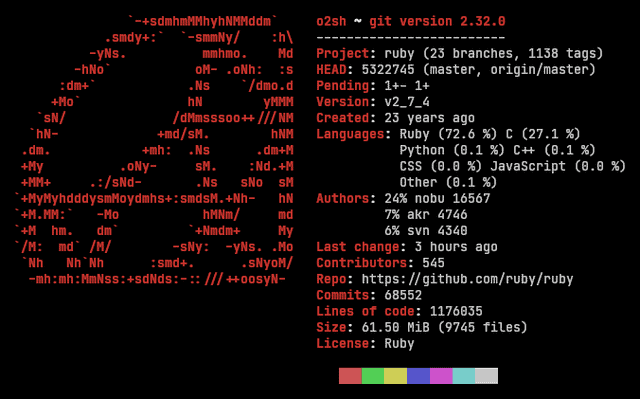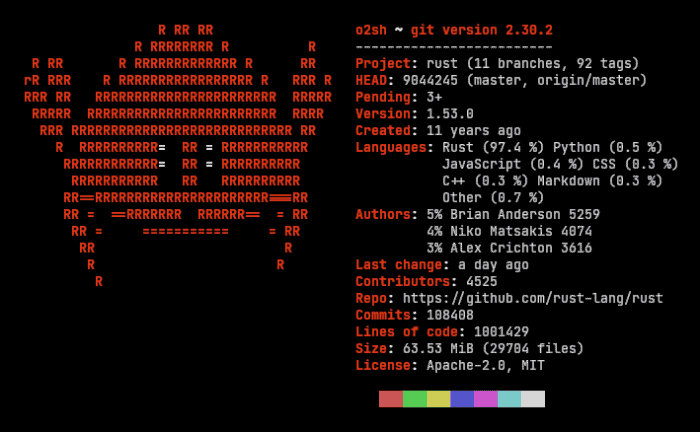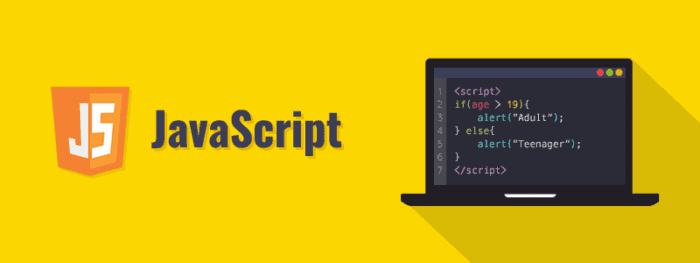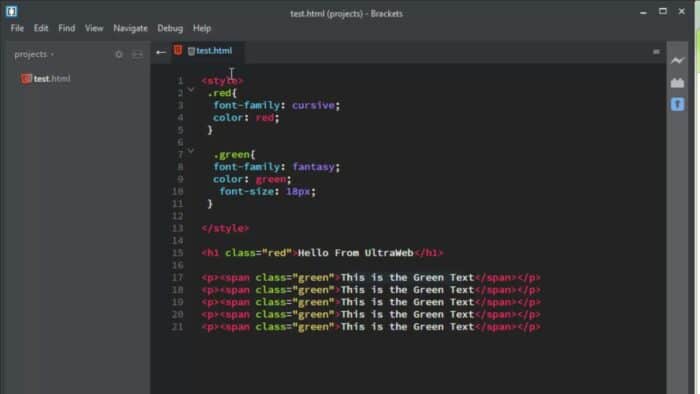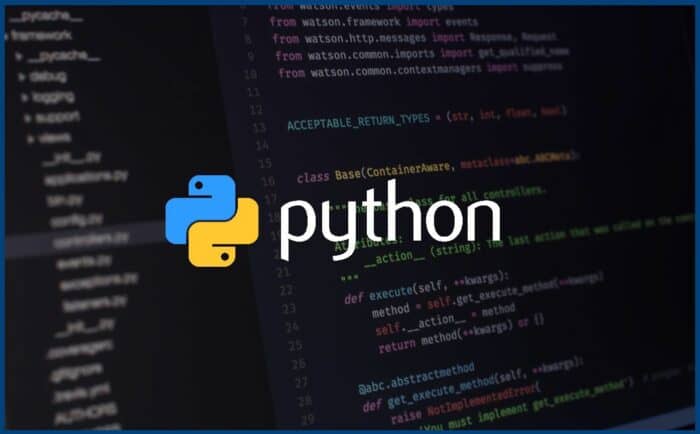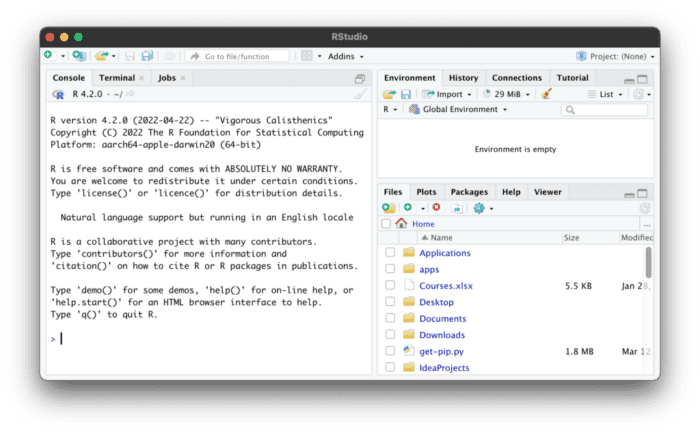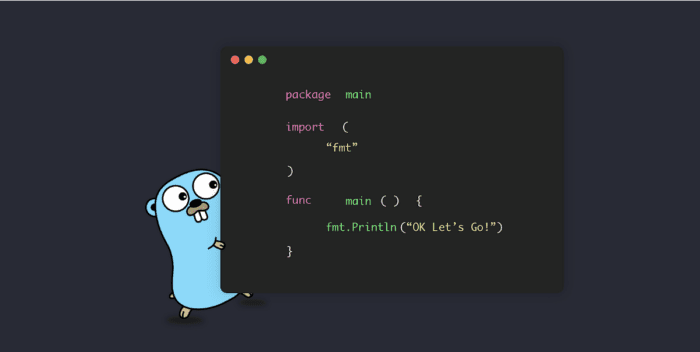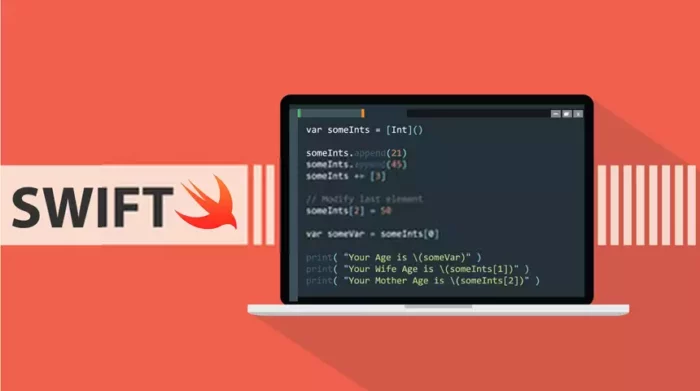
This post is RIGHT for you if you’re looking for the easiest programming languages to learn. For example, you may have chosen to pursue a cybersecurity or software engineering career in response to the significant increase in demand for programmers and developers worldwide. Or you’re curious about the simplest programming languages for beginners.
There are approximately 7,117 languages worldwide, along with 700 programming languages, including Esolang (used to test the boundaries of languages).
Even though it is evident that these languages are no longer in use, the number is still enormous. Moreover, newcomers to this profession may feel safe and confident due to the many languages available.
For convenience, I have compiled a list of the top programming languages to learn. Considering both the simplicity of learning and the demand in the job market.
| Programming Languages | Level | Applicability |
|---|---|---|
| 1. HTML | Very Easy | Web Development |
| 2. Javascript | Easy | Web Development (Frontend), Mobile Apps, Game Development |
| 3. Python | Easy | Artificial Intelligence, Machine Learning, Data mining |
| 4. Ruby | Easy | DevOps Tools, Servers, AI, Machine Learning |
| 5. Java | Moderate | Mobile Apps, Internet-of-Things (IoT) Devices |
| 6. Php | Moderate | Web Development (Backend) |
| 7. R | Easy | Data Analysis, Data Scientists |
| 8. Rust | Moderate | Automation Systems |
| 9. Go (Golang) | Easy | Big Data, Servers, Network Programming |
| 10. Swift | Moderate | Apps for Apple (iOS) devices |
The best part?
These simple programming languages have performed extraordinarily well over the past years and will continue to increase throughout this decade.
Factors to Decide Easiest Programming Languages to Learn Development Skills
I have analyzed the five factors below to determine the simplest programming language from a pool of more than 700 languages.
- Ease of Learning
- Popularity of Language
- Job Market of Language
- Demand in the Future
- Applicability in Real Life Projects
What are Easiest Programming Languages to Learn?
Now, without further ado, let’s examine these simple programming languages.
1. Ruby
Ruby is an object-oriented, general-purpose programming language. It is a widely used programming language, and its elegance makes it one of the simplest to learn and employ.
This programming language creates DevOps tools, servers, command-line media players (with FFI + libVLC), full-stack web development, machine learning, and even artificial intelligence. If you want to print “Hello World,” all you need to do is type puts (“Hello World”);
It is frequently compared to Python due to its easy syntax and powerful utility in machine learning, data science, and artificial intelligence. Ruby, similar to Python’s Django and Flash frameworks, has its web framework called Ruby on Rails.
This framework is mainly used to develop web and mobile apps. For example, Twitter, a popular microblogging website, and Spotify, an online music streaming app, are two of its numerous practical apps.
Two of the primary benefits of learning Ruby as your first programming language are:
Ruby is a highly versatile programming language that enables you to execute a wide range of activities, including parsing, data cleansing, and filtering; web scraping and crawling; static website generators; API clients; and report generators (HTML, CSV, PDF).
The Ruby on Rails framework can easily construct whole web apps and web development.
- Ease of Learning: Moderate
- Popularity of Language: High
- Job Market of Language: High
- Demand in the Future: High
- Applicability in Real Life Projects: High
In addition, if you become stuck when learning Ruby, there is an online community where you may discover free resources and books on the Ruby programming language.
2. Rust
If we talk about the popular and easiest programming language for web development. The Rust Programming Language is an open-source language developed by Mozilla, a massive online technology business. It is a “systems programming language that executes extremely quickly, prevents segfaults, and ensures thread safety.” Rust has garnered great attention recently because of its distinctive characteristics and prospective uses in the software development, Internet of Things, and embedded systems industries.
Moreover, Rust is a memory-safe programming language that protects against buffer overflows and data races. Rust also employs a type system to prevent errors by ensuring that a program works with values of the appropriate types. Rust’s characteristics make it suitable for low-level and high-level jobs, such as operating system programming and web development.
The benefits of Rust Programming Language include:
Improved Performance and Memory Safety: Rust offers enhanced performance and memory safety over other programming languages due to its static type system, which enables the compiler to detect problems and optimize code more effectively.
Concurrency and High Availability: Rust’s capabilities, such as lightweight threads and simple, efficient shared-memory concurrency, facilitate the creation of highly concurrent and available systems.
Easy Learning Curve: Rust is reasonably simple to learn because of its simple yet effective syntax and straightforward grammar.
Reliable and Refactorable Code: Rust provides guarantees other programming languages lack, such as memory safety and data race freedom. It enables the writing of stable, refactorable code.
Clear and Efficient Syntax: Rust’s syntax is straightforward, succinct, and simple to read, which makes it easier to debug, maintain, and optimize your code.
- Ease of Learning: Low
- Popularity of Language: Moderate
- Job Market of Language: Moderate
- Demand in the Future: High
- Applicability in Real-Life Projects: Moderate
3. Javascript
It is one of the simplest programming languages to learn and is used to add functionality to web pages and apps.
Javascript is one of the best and simplest programming languages for novices. With the internet and web expansion, it has reached places it was never intended to go.
It is expanding more quickly than any other programming language. Initially, Javascript was primarily used in web browsers to enhance the functionality and interactivity of web pages. For example, when you click a button on a webpage, the Javascript code enables you to complete particular actions, such as submitting a contact form or notifying you when your account password is wrong or weak.
Along with HTML and CSS (Cascading Style Spreadsheet), this language has been commonly used for web development. Consequently, it is known as a scripting language.
Those days, however, are long gone. Today, Javascript is used to create mobile and online apps with complete functionality. In addition, you may create real-time networking apps, such as chats, video streaming services, and even game development.
Netflix, Google, PayPal, Uber, and Microsoft are only a handful of the notable apps built with JavaScript. In addition to online apps, Javascript can be used to create search engines and do mathematical computations for data science and data analysis.
All in all, with JavaScript, the sky’s the limit.
- Ease of Learning: Moderate
- Popularity of Language: High
- Job Market of Language: Very High
- Demand in the Future: High
- Applicability in Real-Life Projects: Very High
4. PHP
PHP stands for Hypertext Preprocessor, a general-purpose and object-oriented programming language. This programming language is mainly employed in web development for server-side functionality.
In the past, this best programming language to learn was designed to supply the website’s back-end functions. But those days are long gone; PHP is now used for command-line scripting and can build desktop and web apps.
PHP has been a popular programming language among developers since its introduction in 2020. PHP is a server-side scripting language that links databases such as JSP, APS, and MySQL to web pages.
It is one of the easiest programming languages for beginners to learn. However, even if you become stuck when learning PHP, a community online may provide the necessary assistance.
If you’re serious about building a career in web development, PHP is your language of choice.
WhatsApp, Facebook, WordPress, Yahoo, and Wikipedia are a handful of major web and mobile apps whose backends are created with PHP.
- Ease of Learning: Moderate
- Popularity of Language: Very High
- Job Market of Language: Moderate
- Demand in the Future: Moderate
- Applicability in Real-Life Projects: Moderate
There is a widespread misconception that PHP needs to be updated compared to modern programming languages. In practice, however, there is no alternative to PHP for server-side scripting, not even web frameworks like Python’s Django.
5. HTML
HTML is a markup language, not a programming language.
Based on markup tags, a markup language is used to organize and classify the items on a web page. A web browser interprets these markup tags into what humans see as a website’s visual appearance.
Most online browsers make it possible to inspect the HTML code of any website. For example, to view the web page code in Google Chrome, you can press CTRL + SHIFT + I (Windows) or Command + Option + C (Mac).
The words enclosed by angle brackets, such as <html>, <head>, and <body>, are markup tags. All web pages must contain specific markup tags before they can be considered valid.
This language is used to develop webpages and web pages. Combining HTML and CSS (Cascading Style Sheets) allows for various online design elements, including colors, text, images, and fonts. In addition, HTML is combined with JavaScript to create dynamic web pages with additional functionality.
- Ease of Learning: High
- Popularity of Language: High
- Job Market of Language: Moderate
- Demand in the Future: Moderate
- Applicability in Real-Life Projects: Moderate
6. Java
Java is a general-purpose programming language and is also known as an official mobile app development programming language.
It is a high-level programming language used on various devices, but it is surprisingly simple to master. As a result, this programming language is frequently employed to create Android-based apps and other Internet of Things (IoT) devices.
Java’s idea of “once written, run anywhere” enables it to be used in many ways. Java uses a virtual machine known as the JVM, which allows Java to work on numerous platforms.
The following regions of Java are notable:
Gaming Apps: With the jMonkey Engine, a sophisticated open-source 3D engine, it is possible to construct 3D games with Java.
Mobile Apps: Java’s compatibility with Studio and Kotlin enables the development of mobile apps with simplicity and efficiency.
Enterprise Apps: It is frequently used by software engineers to create apps for various industry-level software used in the banking, finance, etc. industries.
It controls equipment such as ATMs, industrial robots, and medical devices ranging from prosthetic limbs to blood glucose monitoring.
Moreover, the Java-powered logo is becoming increasingly prevalent with the rapid expansion of connected home gadgets, from light bulbs to garage door openers. Airbnb, Uber, Amazon, Instagram, Pinterest, and Google all use Java for at least a portion of their websites and apps.
- Ease of Learning: Moderate
- Popularity of Language: Very High
- Job Market of Language: High
- Demand in the Future: High
- Applicability in Real-Life Projects: Very High
7. Python
Python is the most popular and fastest-growing programming language in the world. Not only are software programmers fond of it, but also mathematicians, data analysts, scientists, accountants, network engineers, and even children.
What’s the reason? Because it is an easy-to-learn programming language. Python is used for numerous activities, including data analysis and visualization, Artificial Intelligence, machine learning, and automation.
To demonstrate its true capabilities, you must frequently do repetitive actions such as copying, renaming, and uploading data to a server. However, you may easily develop a Python script to automate the entire process and save countless hours.
Python is a strong yet simple programming language designed not only for developers but also for accountants, mathematicians, and scientists who may use it to make their lives easier.
Python can also be used to develop online apps, mobile apps, desktop apps, software testing, and even ethical hacking.
Suppose you wish to extract the initial three letters of “Hello World.” Here’s how you would do it in C#, Javascript, and Python.
C#: str.Substring(0, 3)
Javascript: str.substr(0, 3)
Python: str[0, 3]
With Python, complicated issues can be solved in less time and with fewer lines of code. In addition, python’s ease of use and versatility make it one of the simplest and most effective programming languages.
In terms of jobs and careers, it is one of the most in-demand languages. The average salary of a Python developer is a whooping USD 119,000 per year.
- Ease of Learning: Moderate
- Popularity of Language: High
- Job Market of Language: Very High
- Demand in the Future: Very High
- Applicability in Real-Life Projects: Very High
In a nutshell, Python is a general-purpose programming language with an easy-to-understand syntax. All of this indicates that Python is an excellent programming language.
8. R
R is a free, open-source programming language that data scientists and analysts frequently employ. This programming language offers a free software environment for statistical computing and graphic design.
If we talk about the most popular programming languages, R is regarded as one of the simplest programming languages for beginners seeking a career in statistics to master due to its broad collection of statistical and graphical methods.
Due to its simplicity and applicability, it is frequently compared to Python. However, r is, without a doubt, a powerful, flexible, and one of the simplest coding languages to learn.
Compared to many other programming languages on this list, R is a newer language, but it still needs to be added for beginners. However, despite being a new language, it has a thriving online community that offers free, helpful materials anytime you need them.
If you are interested in becoming a Data Scientist or pursuing a career in machine learning, you should give it a shot.
Other sectors that require the capabilities of the R programming language include Finance, BioScience, Supply chain, Sports, Retail, Marketing, and Manufacturing.
- Ease of Learning: High
- Popularity of Language: Moderate
- Job Market of Language: Moderate
- Demand in the Future: High
- Applicability in Real-Life Projects: Moderate
Tech giants such as Facebook, Google, and Twitter use the R programming language to execute any statistics or data processing and visualization of their target clients.
9. Go (or Golang)
Google’s Go is a general-purpose programming language. It was created in 2007 but released to the public in 2009.
Google’s primary developers set out to design a language primarily based on C’s syntax but without the prevalent complications of languages like C and C++.
As a result, Go was created, which incorporates many characteristics of other contemporary programming languages, including pointers, arithmetic functions, and type inheritance.
The final output is a robust language with a refined library and unrivaled speed. Go is a powerful, basic, and one of the simplest programming languages designed for novices due to its combination of these characteristics.
Uber, Twitch, Dailymotion, Soundcloud, Dropbox, and Sendgrid are prominent web apps and services using the Go programming language.
This language helps develop web apps with minimal frameworks, API, and servers. In addition, because it is a universal language, it may be used for network programming, large data, and machine learning.
- Ease of Learning: Moderate
- Popularity of Language: Low
- Job Market of Language: Moderate
- Demand in the Future: High
- Applicability in Real-Life Projects: Moderate
10. Swift
Swift is an open-source, general-purpose programming language created by Apple Inc. in 2004. It is a robust and interactive programming language designed for iOS, macOS, tvOS, watchOS, and other Apple operating systems.
This programming language is frequently used to construct web apps for iOS-based mobile devices, PCs, and servers.
This language is easier for novices to learn than C/C++ and C#. However, if you’re interested in developing apps for Apple devices such as iPhones and MacBooks, Swift is your best option.
Apple has created Swift Playgrounds, a tutorial app for the Swift programming language explicitly designed for novices. It is an interactive environment created for the benefit of the swift programming community.
Not to add, this language is the foundation of Apple’s innovative and powerful web apps.
ALSO SEE: Best Free VPN
Industry titans like IBM use Swift to construct online apps. Uber, Slack, Robinhood, Lyft, Delivery Hero, and Accenture are notable companies that actively employ the Swift programming language.
- Ease of Learning: Low
- Popularity of Language: High
- Job Market of Language: High
- Demand in the Future: High
- Applicability in Real-Life Projects: Moderate
Final Thoughts – Easy Programming Languages
You may ask, what is the simplest programming language for beginners, and what should I study?
The obvious answer is JavaScript and Python.
Both programming languages are on par in terms of ease of learning, popularity, employment market, practicality in the real world, and future need.
If you are primarily interested in developing web apps, you should learn Javascript. Learn Python instead if you’re more interested in machine learning, data science, and artificial intelligence.
One language is in no way better than the other. However, both have extensive practical utility and are simple for novices to master.
